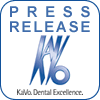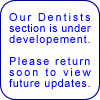Ozone
Treatment of Root Caries after 21-Months
By J
C Holmes
Queen's University of Belfast, United Kingdom |
| Objectives:
The objective was to assess the efficacy of an ozone delivery
system1 combined with the daily use of a remineralising
toothpaste, mouthrinse and spray(KaVo Gmbh) for the management
of non cavitated leathery primary root carious lesions
(PRCL’s) in an ageing patient group (>60, mean
70.8yrs, SD+ 6). |
Methods: A total of 89 patients with 2 leathery
lesions each (178 PRCL’s in total) in the middle severity
lesion group 2 (J Dent Res 1993,73: 623-629) were recruited.
The lesions were randomly assigned into two groups; treated
with ozone, or no ozone and received a professionally applied
remineralising solution1. The Ozone treatment was applied
by a different operator than the one recording the clinical
criteria used to define the severity of the lesions. When
no Ozone was applied the cup and suction system were placed
on the control lesion for the same time interval as on the
test lesions. Remineralising pastes, mouthrinses and sprays
were also dispensed to each patient with instructions. At
baseline, 3, 6, 12, 18 and 21 months, the lesions were clinically
assessed as soft, leathery or hard, scored with the validated
root caries severity index and received treatment as at baseline.
Results: After 21 months, 81 patients completed
the study. There were no observed adverse events. At 21 months,
100% of ozone treated PRCL’s had reversed, whilst only
8% of the control lesions reversed (p < 0.001). At 21 months,
in the control group,12% of the PRCL’s had progressed
from severity index 2 to 3 (p < 0.001); i.e. they had become
more severe.
Conclusions: Leathery non cavitated primary
root caries can be treated non-operatively with ozone. This
novel treatment regime using ozone is an effective alternative
to conventional "drilling and filling".
 |
|




